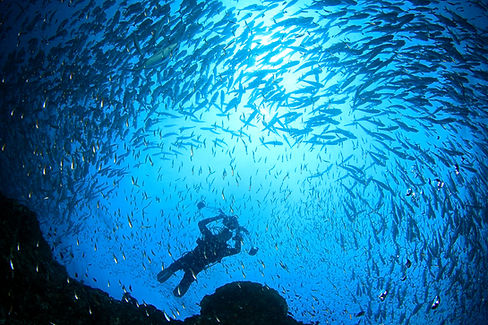
UNDERSTANDING CORAL BLEACHING
Coral bleaching is a phenomenon that occurs when coral reefs lose their vibrant colors and turn white or pale due to stress-induced expelling of the symbiotic algae living within their tissues. These symbiotic algae, known as zooxanthellae, provide corals with essential nutrients through photosynthesis and give them their characteristic colors. When corals are subjected to environmental stressors, they expel the algae, which leads to the loss of color and can have serious consequences for the health of the reef ecosystem.

CAUSES
The primary cause of coral bleaching is elevated sea temperatures, which can be attributed to climate change and global warming. When ocean temperatures rise, corals experience stress, and they respond by expelling the zooxanthellae. Without these algae, corals become more susceptible to disease, reduced growth, and mortality. If the stressors persist, the corals can die.
Coral reefs are vital ecosystems that support a vast array of marine life. They provide habitat for countless species, protect coastlines from erosion, and support fisheries that are important for human populations. The loss of coral reefs due to bleaching can have far-reaching ecological, economic, and social implications.

Why Are Coral Reefs
Important?

Combating Coral Bleaching
The primary driver of coral bleaching is climate change, specifically the warming of ocean waters. We must accelerate efforts to reduce greenhouse gas emissions.
Transitioning to renewable energy sources, advocating for policies that limit carbon emissions, and promoting sustainable practices are fundamental steps.
As backpackers and explorers we must endorse and respect the implementation of marine protected areas (MPA's) and further spread awareness of the issue, particularly in relation to pollution and overfishing.
More minor exercises, but still important, are to avoid contact with coral reefs and use ocean/ reef safe sunscreen.
Its not all doom and gloom, there are some interesting initiatives to helps protect and generate new areas of coral reef, some are also kind of beautiful! The image above shows the concrete sculpture park at MUSA or Museo Subacuatico de Arte off Cancun, Mexico. The 500 life size human statues have pieces of coral implanted in them to encourage the growth of coral. These were first sunk to the ocean bed in 2009 and to day minimal
What Initiatives Are There?

Innovative technologies like 3D-printed coral structures and artificial reefs can provide new habitats for corals to grow. The images on the right and below show Reef Design Labs initiative, follow the below link to go to their site where you will find some really cool regeneration focused design ideas.

3D Printing


Leave No Trace
Most backpackers and explores live by this ethos, we endorse it and live by it. Plastics and pollutants do not belong in the ocean or on the beach. If you walk past rubbish on the beach, it does not take much to pick it up and move it to a place where it can be suitably taken away. If you do this or have ever done it or do it in the future, thank you. This leads us to another important area, recycling and ocean clean ups.
